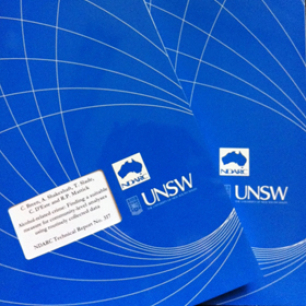NDARC Technical Report No. 299 (2009)
EXECUTIVE SUMMARY
Outcome evaluations of peer education projects amongst ecstasy and related drugs (ERDs) users are rare in the published literature. The aim of this study was to see if health messages can be effectively delivered to ERDs users utilising a peer-led intervention. A quasi experimental study design was used where one group of participants (the experimental group) received unique messages about ‗serotonin syndrome’ and the need to ‘rehydrate before you dehydrate’ in addition to routine ERDs peer education messages, while the other group (the control group) received routine ERDs peer education messages only.
The study hypothesis was that patrons at experimental events would have a high recall of the unique messages at three month follow-up. As these unique messages had never been used in Australian ERDs harm reduction activities, participants who recalled these messages were highly likely to have received them from peer educators. A further outcome measure of the study was reported behaviour change in relation to the messages delivered
The results of the study indicate that there was a good recall of health messages disseminated to ERDs users using a peer-led methodology. At the three month follow-up, there was a high free recall of the two unique messages. The 'serotonin syndrome‘ message was recalled by 64% of the experimental group at baseline interview and by 46% at follow-up interview, indicating that a significant proportion of the study population remembered what they had discussed with a peer educator at an event three months earlier.
Cued (or prompted) recall of the 'serotonin syndrome’ message was greater amongst the experimental group than the control group, with over 85% of the experimental group reporting that they had heard of the 'serotonin syndrome‘ message from a peer educator at follow-up interview.
There were also some promising results from the control group regarding the generic information about alcohol and other drugs that they received. Among this group there was some evidence of recall of the top two messages addressing the need to drink water and information about the harms of mixing illicit drugs.
There were a range of drug-related behaviour changes noted, most particularly that many participants reported that they intended to reduce their drug use and/or use drugs more safely following contact with a peer educator.
The experimental group had significantly reduced their ecstasy and meth/amphetamine use at follow-up. Almost half the sample reported that they had increased their water use as a result of the information they had received from a peer educator. In addition, the experimental group was more likely to consume only water when using ecstasy than were controls. No significant changes in patterns of mixing of drugs was detected between experimental and control group participants.
The experimental group were significantly more likely to take drug information resources during the peer intervention and more likely to report referring to them at a later date than the control group. Given that young people are high users of information technology, a particularly unexpected finding was that less than 10% of participants reported that they 'often‘ accessed the internet for information about ERDs. This suggests that ERDs users mainly seek out this kind of information from other sources, such as from their peers. When asked which sites participants did access, most reported pillreports.com, which is a site that contains a global data base of ecstasy pills based on both subjective user reports and scientific analysis. For this group, it is therefore likely that access to the internet is limited mainly to finding out about the content and purity of pills rather than education or information about the effects of drugs.
The peer educators were also seen as very credible by the majority of participants in this study, with the experimental group significantly more likely to find the peer educator more credible than the control group.
The study‘s findings support the use of peers in the dissemination of health-related messages to ERDs users and suggests that peer-led interventions are a valuable medium to use in conjunction with other methods of drug education for this difficult to access group.


